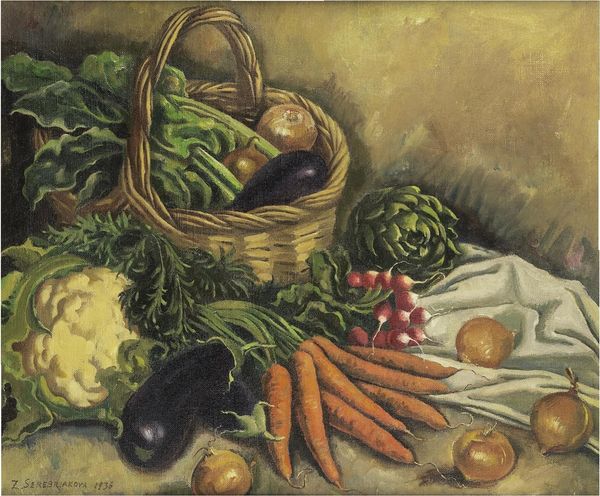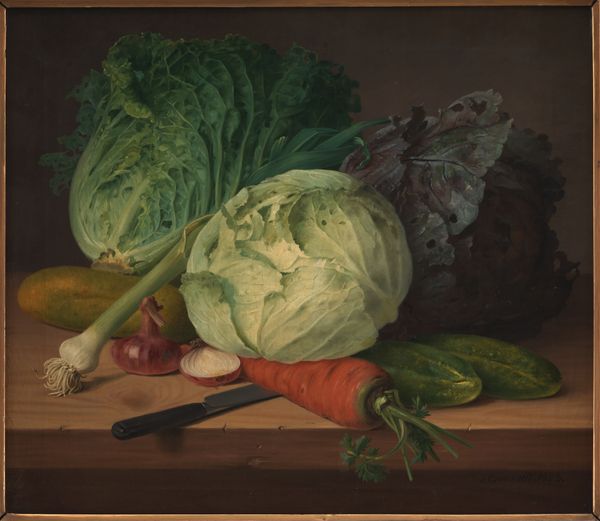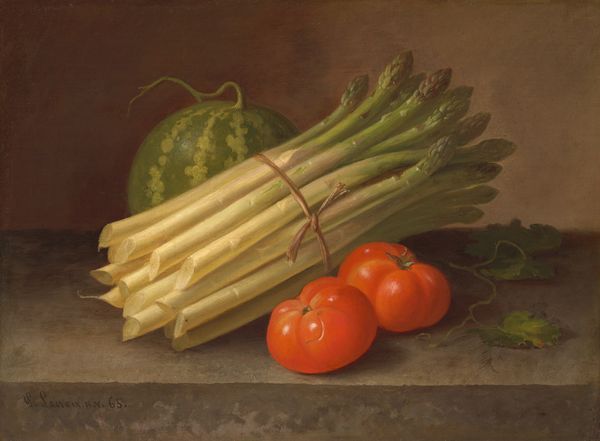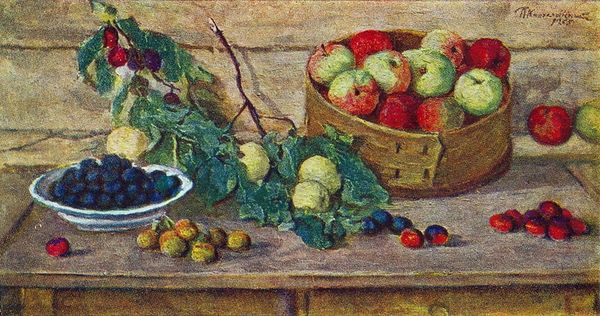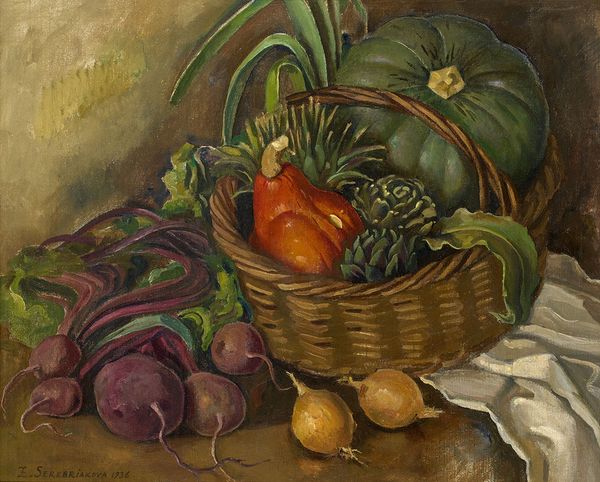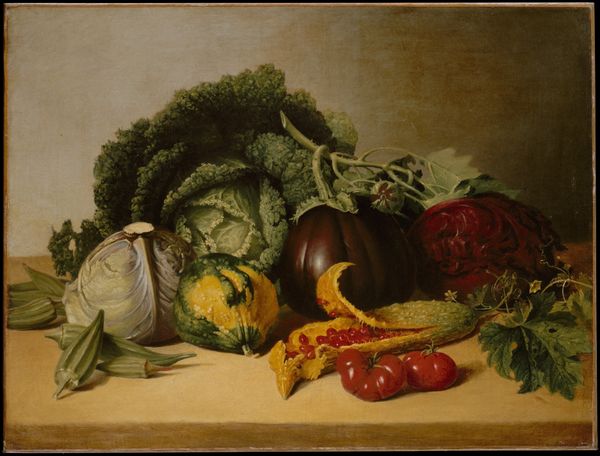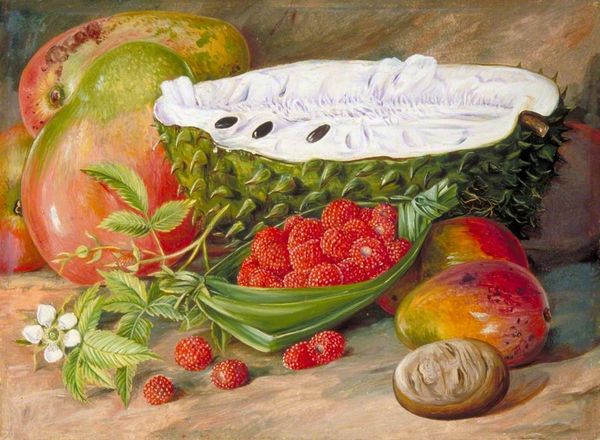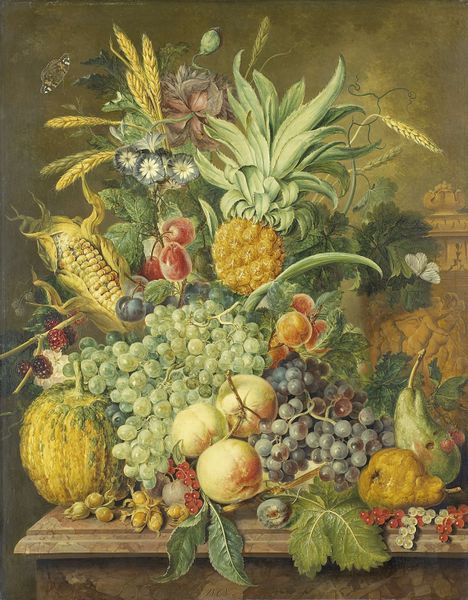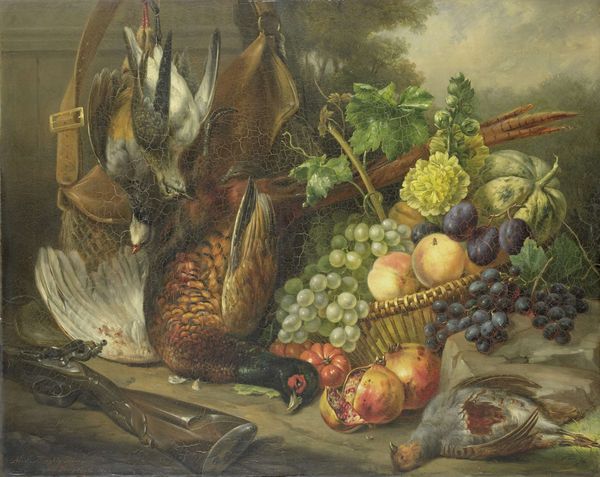
painting, oil-paint
#
table
#
food
#
painting
#
oil-paint
#
oil painting
#
fruit
#
genre-painting
#
realism
Dimensions: 61.6 x 50.8 cm
Copyright: Public domain
Curator: William Merritt Chase painted "Still Life with Vegetable" around 1870 using oil on canvas. It resides in a private collection, offering a glimpse into everyday life depicted with realism. Editor: It has such a rich, dark tonality, doesn't it? And there's a curious weight to the arrangement, a stillness that’s almost unnerving. Curator: Indeed. Still lifes like these from the mid-19th century often reflect the era's preoccupation with social order and domesticity, although that dead duck is slightly disruptive of a tranquil message, in my view. How does this painting speak to collective memory and cultural significance for you? Editor: I am struck by the repetition of round forms. The tomatoes, the turnip, even the curve of the bowl – they create a sense of abundance and visual rhythm, suggesting themes of fertility and provision, maybe even sacrifice? The duck hints to the temporary and perishable state of nature itself. Curator: The inclusion of that dead duck alters how we must interpret the symbolism in "Still Life with Vegetable." When an animal becomes an object, we are led to reflect on issues of power, control, and perhaps, mortality. Also the duck seems to have a note attached. What is that for? Editor: I am really curious. It’s like a tiny stage on which objects perform. Even that crumpled paper peeking out from under the duck is there to set up expectations and tension within the narrative. Curator: Chase's dedication to realism gives agency and voice to the objects he selected, yet it's hard not to see this abundance against the backdrop of its time. An agrarian society beginning to see mass industrialization. Food wasn't always so accessible or readily available. This tableau almost insists we ask broader questions. Editor: Absolutely. It shows how objects transform from everyday items to symbols charged with social commentary or cultural ideals through artistic interpretation and repeated imagery. "Still Life with Vegetable" transforms something common to a message full of layers. Curator: What is so interesting about art from the Realism movement is its ability to allow us, still today, to see and reflect the present and past through different perspectives, triggering the revision of assumed knowledge. Editor: Looking closely has given me a new appreciation for how visual symbols, however commonplace, carry deeper meaning. The everyday is truly extraordinary.
Comments
No comments
Be the first to comment and join the conversation on the ultimate creative platform.

